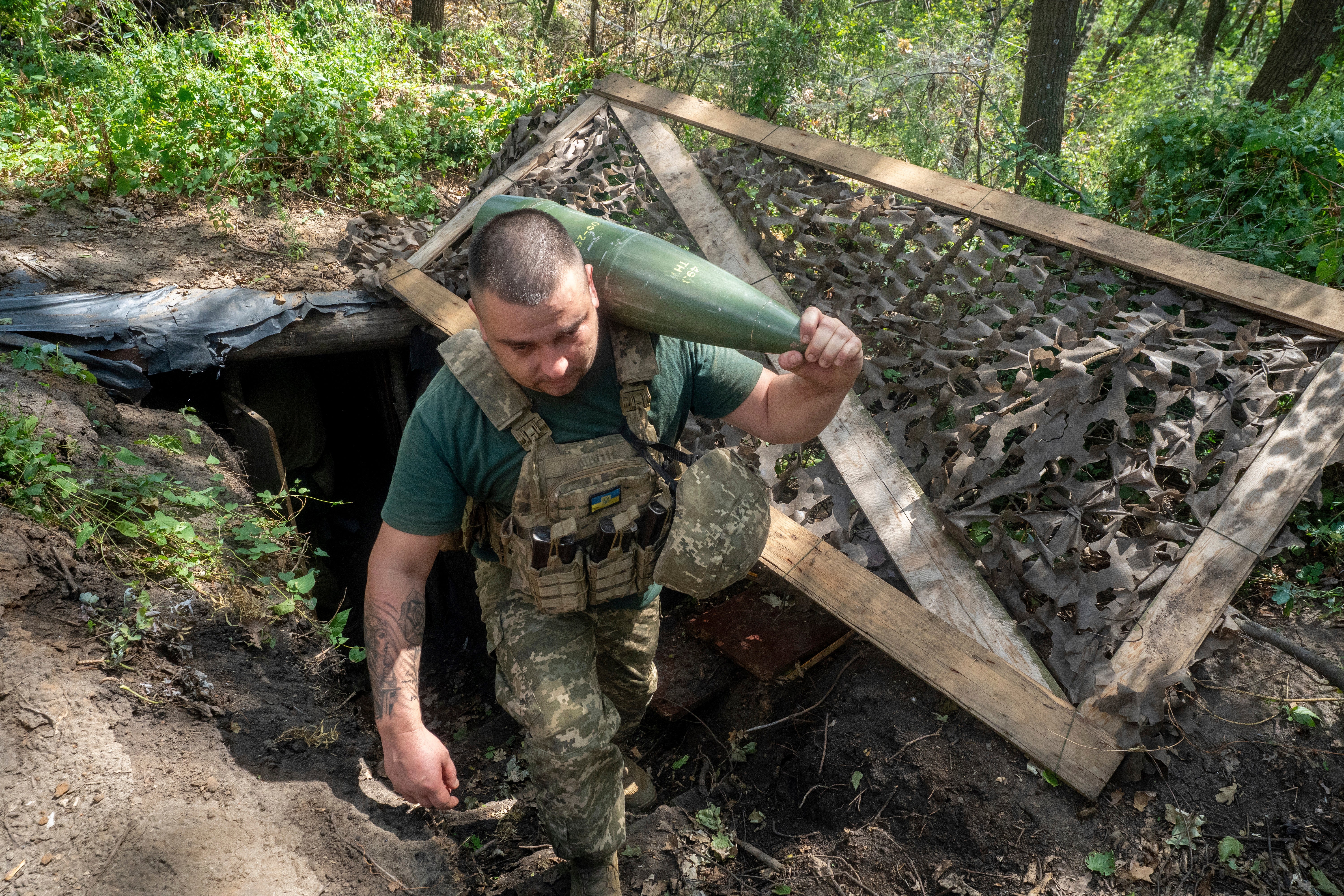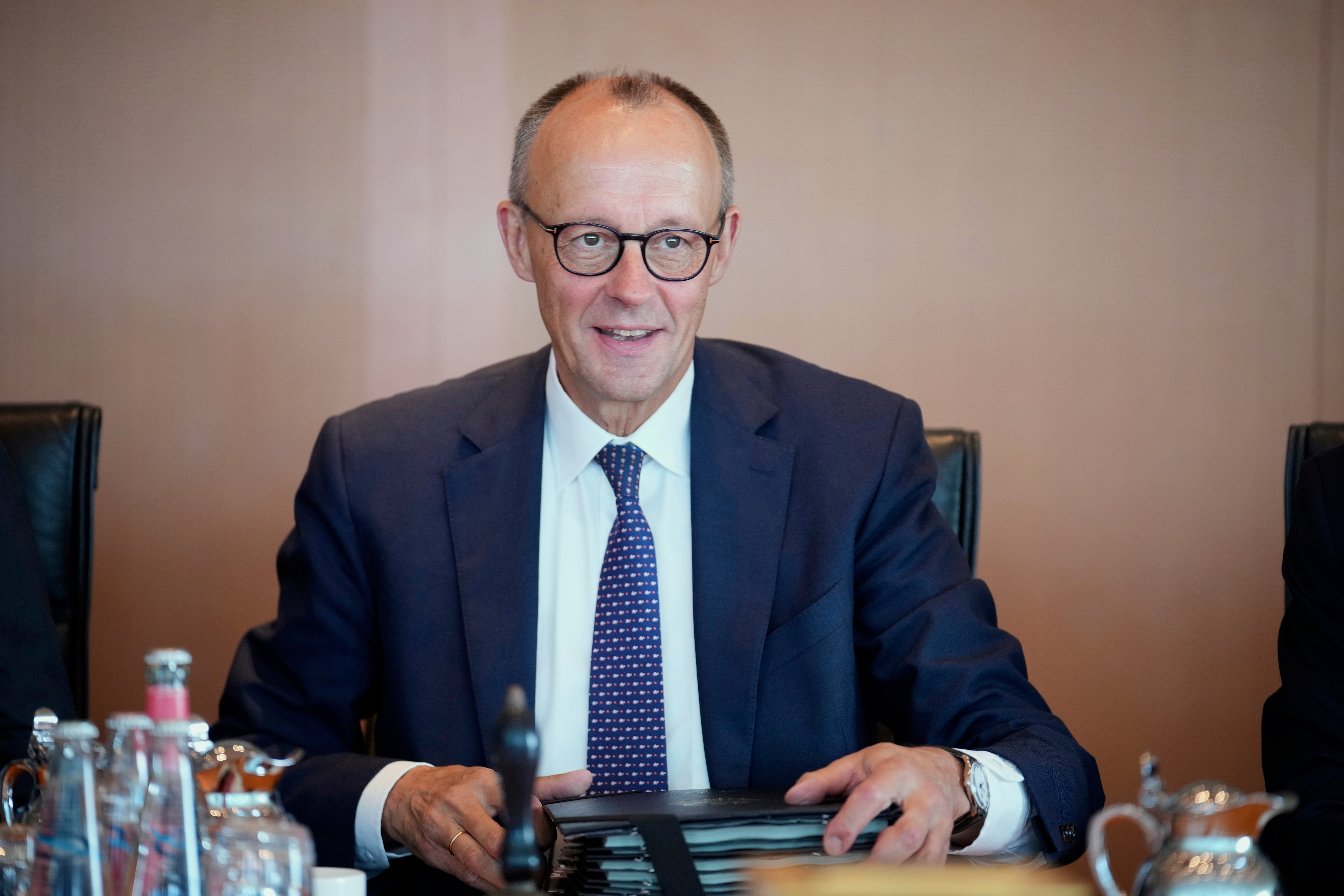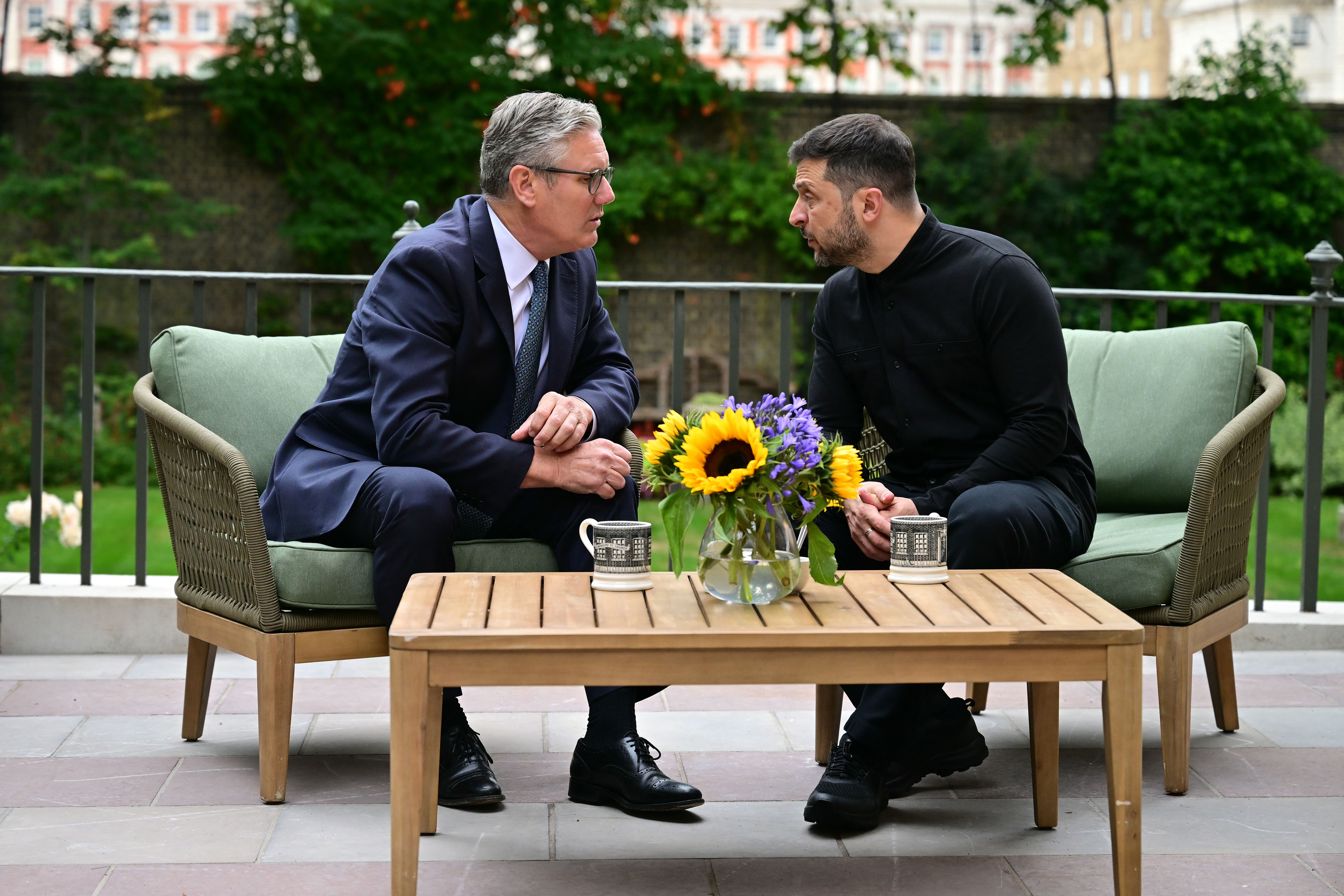Donald Trump and Vladimir Putin are set to hold a crucial summit in Alaska as the US president attempts to seal a ceasefire agreement on Ukraine.
Russian and American delegations have arrived in Alaska ahead of the talks later on Friday, with Mr Trump’s ceasefire hopes uncertain, but with a last gasp offer from Mr Putin of a possible nuclear deal that could help both men save face.
It comes after Mr Trump met with European leaders and Ukrainian president Volodymyr Zelensky for an emergency virtual summit, organised by German chancellor Friedrich Merz, on Wednesday.
The Ukrainian president then met with Sir Keir Starmer at No 10 on Thursday, stating that they are united in their “strong resolve” to secure a just peace in Ukraine.
Mr Trump insisted the Russian president was “not going to mess around with me” ahead of the first meeting between the two leaders since 2018, saying he thinks both “will make peace”.
Earlier on Thursday, Mr Putin praised Mr Trump’s “sincere efforts” towards ending the war in Ukraine, telling Kremlin officials the US is making “quite energetic and sincere efforts to stop the fighting”.
As the presidents prepare to meet, here is everything we know about the summit so far:

What are the details of the summit
The meeting of the Russian and US leaders at a Cold War-era air force base in Alaska will be their first face-to-face talks since Mr Trump returned to the White House and comes amid Ukrainian and European fears that Mr Trump might sell Kyiv out.
Friday’s talks in Anchorage will include a one-on-one meeting, a bilateral lunch with both delegations and a press conference, the White House announced.
It added that the meeting will take place at 11am Alaska time (8pm BST).

What are both leaders hoping to get out of the talks
Mr Trump, who once said he would end Russia’s war in Ukraine within 24 hours, said on Thursday the three-and-a-half-year conflict had proven a tougher nut to crack than he had thought.
He said if his talks with Mr Putin went well, setting up a subsequent three-way summit with Mr Zelensky – who was not invited to Friday’s meeting – would be even more important than his encounter with Mr Putin.
Mr Trump is pressing for a truce to bolster his credentials as a global peacemaker worthy of the Nobel Peace Prize, something he has made clear is important to him.
Meanwhile, Mr Putin, whose war economy is showing signs of strain, needs Mr Trump to help Russia break out of its straitjacket of ever-tightening Western sanctions, or at the very least not to hit Moscow with more sanctions, something Mr Trump has threatened.
The day before the summit, the Kremlin leader held out the prospect of something else he knows Mr Trump wants – a new nuclear arms control agreement to replace the last surviving one, which is due to expire in February next year.

What has been the reaction from European leaders
Ukraine and its European allies were heartened by their conference call on Wednesday in which, they said, Mr Trump agreed Ukraine must be involved in any talks about ceding land. Mr Zelensky said Mr Trump had also supported the idea of security guarantees in a post-war settlement, although the US president has made no public mention of them.
Wednesday’s call eased their fears of a Trump-Putin deal that would leave Ukraine under pressure to make territorial and other concessions.
European leaders had expressed their concern about being sidelined from the meeting between DC and Moscow. Their overarching concern is that Mr Putin will set his sights on one of them next if he wins in Ukraine.
A statement was issued by 26 European Union leaders on Tuesday, appealing to Mr Trump to defend their security interests at Friday’s summit.
They said they “welcome the efforts of President Trump towards ending Russia’s war of aggression against Ukraine”. But, they underlined, “the path to peace in Ukraine cannot be decided without Ukraine” and “international borders must not be changed by force”.
Mr Zelensky then met with Sir Keir on Thursday, with the pair pictured warmly embracing as they entered No 10. Following the meeting, Downing Street said the leaders expressed cautious optimism about the prospect of a truce “as long as Putin takes action to prove he is serious” about ending the war.

What have all the presidents said ahead of the meeting
Mr Trump said on Monday that he was “going to get everybody’s ideas” before meeting with Mr Putin.
On the eve of the summit, the US president said he thought Mr Putin would do a deal on Ukraine, but he has blown hot and cold on the chances of a breakthrough.
Mr Putin praised what he called “sincere efforts” by the US to end the war.
A source close to the Kremlin told Reuters it looked as if the two sides had been able to find some unspecified common ground beforehand.
“Apparently, some terms will be agreed upon tomorrow [Friday] because Trump cannot be refused, and we are not in a position to refuse [due to sanctions pressure],” said the source, who spoke on condition of anonymity because of the matter’s sensitivity.
Mr Zelensky, meanwhile, has accused Putin of bluffing and playing for time to avoid US secondary sanctions and has ruled out handing Moscow any territory.
Mr Trump has said land transfers between Russia and Ukraine could be a possible way of breaking the logjam.

What could be the outcome of the summit
Mr Putin has set stringent conditions for a full ceasefire, but one compromise could be a phased truce in the air war, although both sides have accused the other of flouting a previous accord.
Analysts say Mr Putin could try to look like he is giving Mr Trump what he wants while remaining free to escalate in Ukraine if he wants to.
“If they [the Russians] are able to put a deal on the table that creates some kind of a ceasefire but that leaves Russia in control of those escalatory dynamics, does not create any kind of genuine deterrence on the ground or in the skies over Ukraine… that would be a wonderful outcome from Putin’s perspective,” said Sam Greene, director of Democratic Resilience at the Center for European Policy Analysis.
Mr Putin, whose forces control nearly one-fifth of Ukraine, wants Mr Trump to start reviving the two countries’ shrunken economic, political and business ties and, ideally, not to make that process contingent on progress on Ukraine.
But it is unclear whether Mr Putin is willing to compromise on Ukraine. In power for a quarter of a century, the Kremlin chief has staked his legacy on coming out of the war with something he can sell to his people as a victory.
Chief among his war aims is complete Russian control over the Donbas industrial region in eastern Ukraine, which comprises the Donetsk and Luhansk regions. Despite steady advances, around 25 per cent of Donetsk remains beyond Russian control.
Putin also wants full control of Ukraine’s Kherson and Zaporizhzhia regions; NATO membership to be taken off the table for Kyiv; and limits on the size of Ukraine’s armed forces.
Ukraine has said these terms are unacceptable and tantamount to asking it to capitulate.



